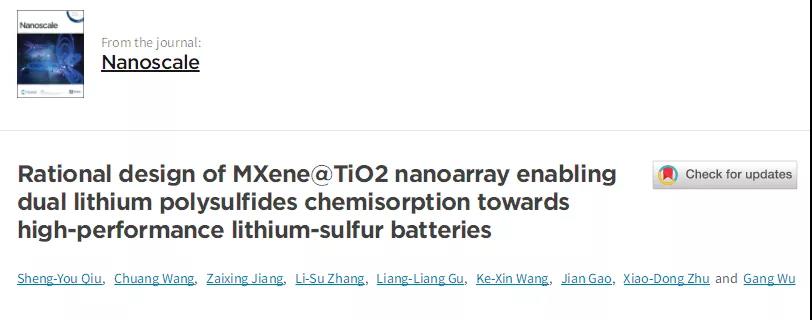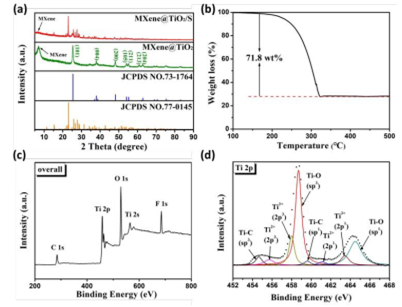Nanoscale: MXene@TiO2 nano-array for high-performance lithium-sulfur batteries
QQ Academic Group: 1092348845
Detailed


Because of its attractive energy density (2600 W h kg-1) and theoretical specific capacity (1675 mAh g-1), lithium-sulfur (Li-S) batteries are increasingly regarded as the current commercial lithium-ion batteries (LIB). ) One of the most promising alternatives. Although sulfur cathode has abundant reserves, low toxicity, and low cost, it also has some inherent shortcomings, such as poor conductivity (5 x 10-30 S cm-1) and large volume expansion, resulting in incomplete utilization of electrode materials and serious mechanical structure damage .

Recently, Professor Zhu Xiaodong of Harbin Institute of Technology published a research paper titled: Rational design of MXene@TiO2 nanoarray enabling dual lithium polysulfides chemisorption towards high-performance lithium-sulfur batteries in the well-known academic journal Nanoscale. In the article, a lithium-sulfur battery electrode material with ultra-high performance was designed and synthesized.


Figure 1. MXene@TiO2 nanoarray synthesis process.
Figure 2. MXene@TiO2 SEM and TEM characterization.

Figure 3. MXene@TiO2 XRD, thermogravimetric and XPS characterization.

Figure 4. Performance test of MXene@TiO2 lithium-sulfur battery.

In summary, we designed and synthesized a MXene@TiO2 nano-array through a simple solvothermal strategy as an ideal sulfur host for high-performance Li-S batteries. The in-situ introduction of TiO2 nanoarrays on MXene nanosheets overcomes the stacking tendency of MXene nanosheets with high specific surface area. By improving the charge transfer and chemical adsorption capabilities of polysulfides, the promotion of electrochemical redox reactions is achieved.
Literature link:
10.1039/D0NR03528A
This information is from the Internet for academic exchanges. If there is any infringement, please contact us and delete it immediately
发送反馈
历史记录
- Previous: [Energy] New MXene-loa
- Next: MXene breakthrough: Na


 mxene academic
mxene academic